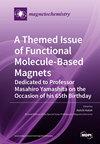Fabrication and Soft Magnetic Properties of Fe–Si–Cr Composites with Double-Insulating Layers Suitable for High-Frequency Power Applications
IF 2.5
4区 化学
Q2 CHEMISTRY, INORGANIC & NUCLEAR
引用次数: 0
Abstract
Soft magnetic composites (SMCs) are composed of alloy materials with the core and insulating layers as the shell. These composites exhibit high saturation magnetic sensitivity and low hysteresis loss, making them a promising material for various applications. The investigation of double layers is considered valuable as it can effectively address the issues of low resistivity and high dynamic loss that arise from non-uniform insulating layers in SMCs. In this study, Fe-Si-Cr/SiO2 particles with a core–shell heterostructure were produced via chemical vapor deposition (CVD). The Fe-Si-Cr/SiO2 materials were coated with different weight percentages (1–6%) of sodium silicate (SS). Subsequently, Fe-Si-Cr-based SMCs were synthesized through high-pressure molding and heat treatment. The effect of the SS weight percentage on microscopic changes and magnetic characteristics was investigated. These findings indicated that a concentration of 4 wt% of SS was the most effective at enhancing magnetic characteristics. The resultant SMCs exhibited high resistivity (21.07 mΩ·cm), the lowest total loss (P10 mt/300 kHz of 44.23 W/kg), a relatively high saturation magnetization (181.8 emu/g), and permeability (35.9). Furthermore, it was observed that the permeability exhibited stabilization at lower frequencies. According to these findings, the combination of CVD and double layers could lead to the further development of SMCs in a variety of applications.高频电源用双绝缘层Fe-Si-Cr复合材料的制备及其软磁性能
软磁复合材料(SMC)是由以芯和绝缘层为外壳的合金材料组成的。这些复合材料表现出高饱和磁灵敏度和低磁滞损耗,使其成为各种应用的有前途的材料。双层的研究被认为是有价值的,因为它可以有效地解决SMC中由不均匀绝缘层引起的低电阻率和高动态损耗的问题。在本研究中,通过化学气相沉积(CVD)制备了具有核壳异质结构的Fe-Si-Cr/SiO2颗粒。Fe-Si-Cr/SiO2材料涂有不同重量百分比(1–6%)的硅酸钠(SS)。随后,通过高压成型和热处理合成了Fe-Si-Cr基SMC。研究了SS重量百分比对微观变化和磁特性的影响。这些发现表明,4wt%的SS浓度在增强磁特性方面是最有效的。所得SMC表现出高电阻率(21.07 mΩ·cm)、最低的总损耗(P10 mt/300 kHz,44.23 W/kg)、相对较高的饱和磁化强度(181.8 emu/g)和磁导率(35.9)。此外,观察到磁导率在较低频率下表现出稳定。根据这些发现,CVD和双层的结合可能导致SMC在各种应用中的进一步发展。
本文章由计算机程序翻译,如有差异,请以英文原文为准。
求助全文
约1分钟内获得全文
求助全文
来源期刊

Magnetochemistry
Chemistry-Chemistry (miscellaneous)
CiteScore
3.90
自引率
11.10%
发文量
145
审稿时长
11 weeks
期刊介绍:
Magnetochemistry (ISSN 2312-7481) is a unique international, scientific open access journal on molecular magnetism, the relationship between chemical structure and magnetism and magnetic materials. Magnetochemistry publishes research articles, short communications and reviews. Our aim is to encourage scientists to publish their experimental and theoretical results in as much detail as possible. Therefore, there is no restriction on the length of the papers. The full experimental details must be provided so that the results can be reproduced.
 求助内容:
求助内容: 应助结果提醒方式:
应助结果提醒方式:


